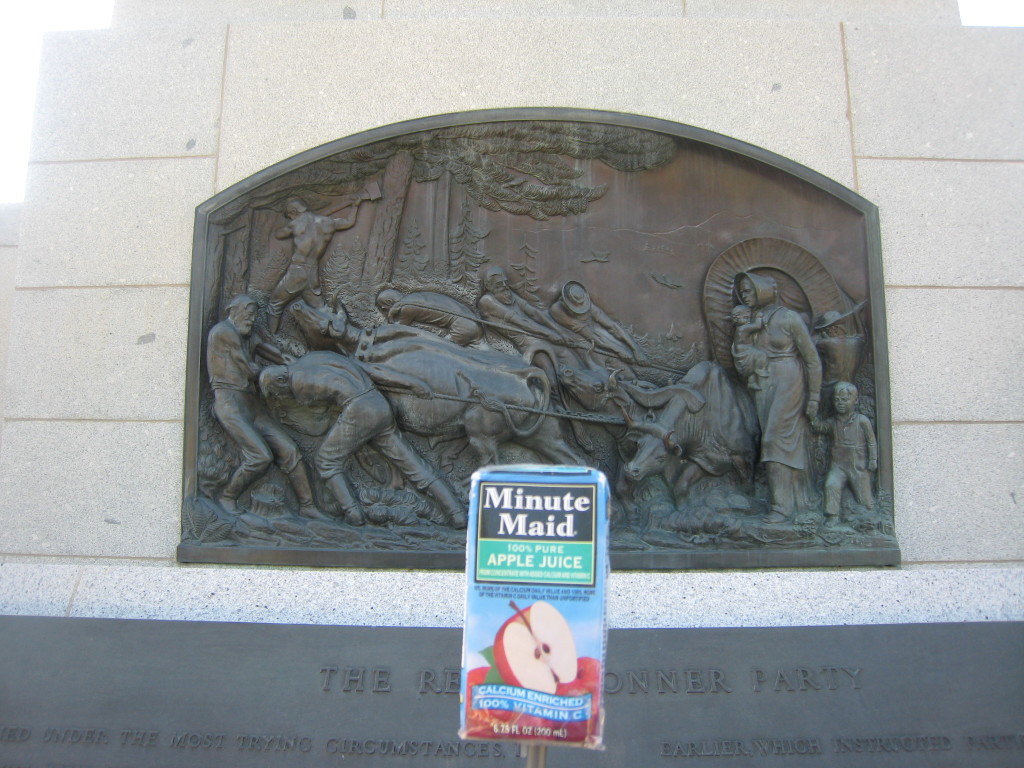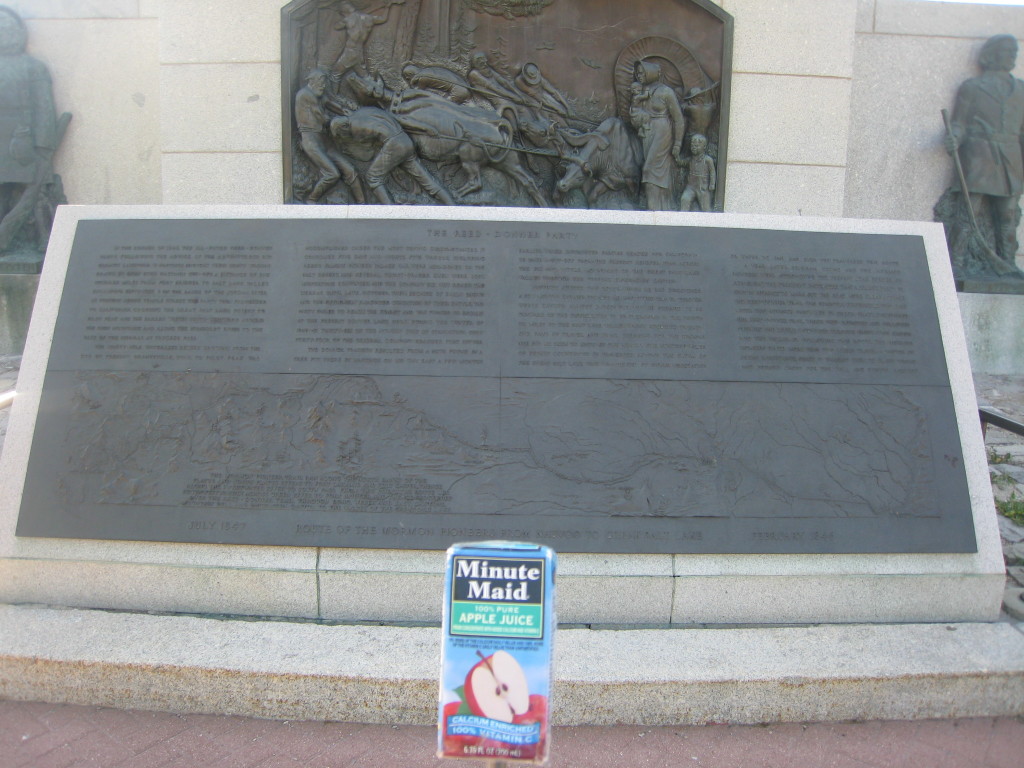Maid Appleton @ This is the Place Monument in Salt Lake City, Utah
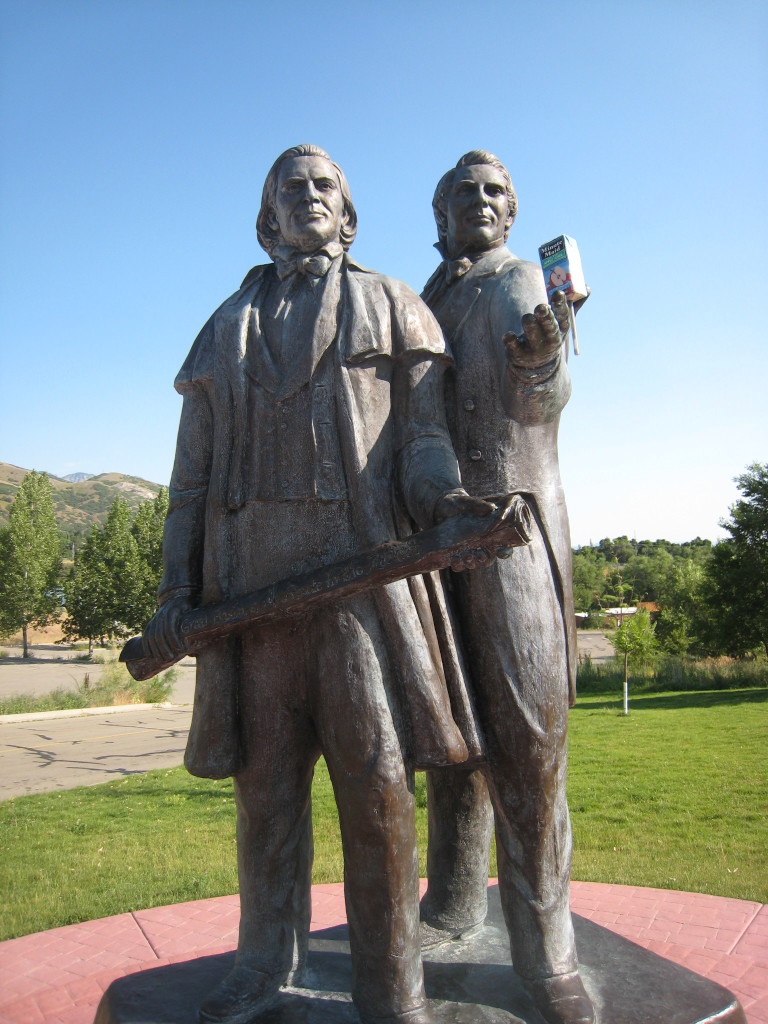
Brigham Young (left) and Joseph Smith (right)
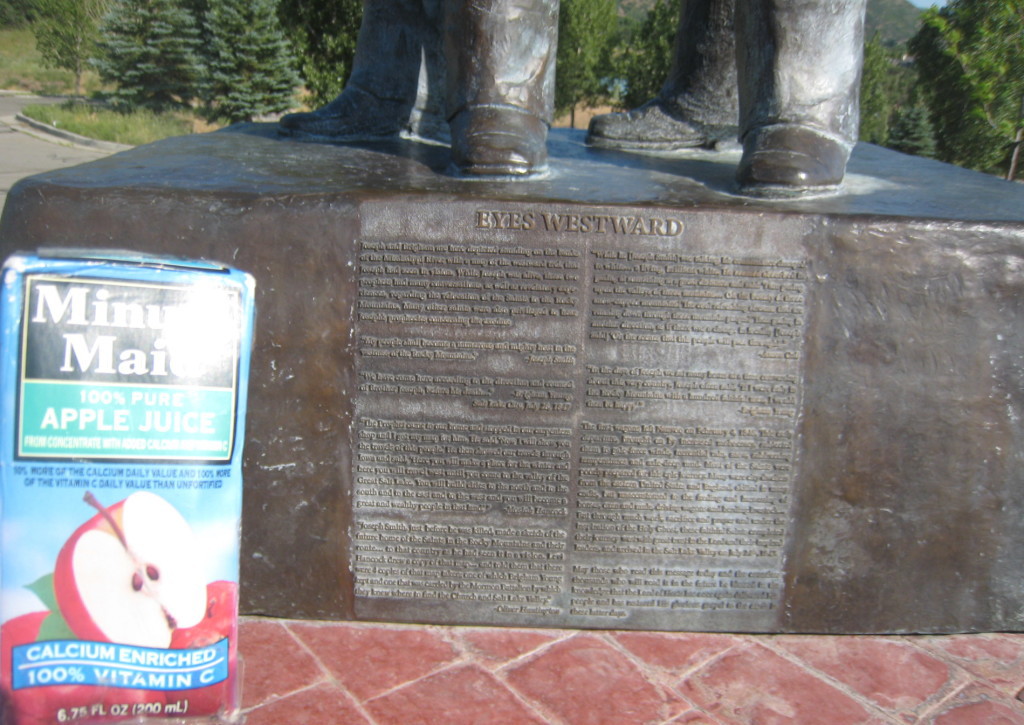
“Eyes Westward”
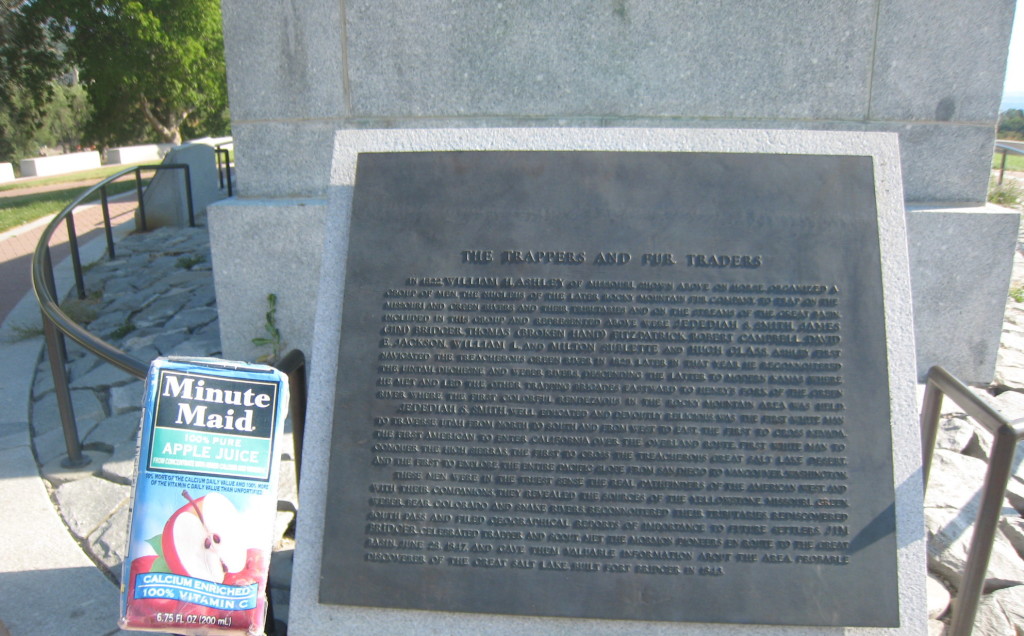
“The Trappers and Fur Traders ~ In 1822, William H. Ashley of Missouri, shown above on horse, organized a group of men, the nucleus of the later Rocky Mountain Fur Company, to trap on the Missouri and Green Rivers and their tributaries and on the streams of the Great Basin. Included in this group and represented above were Jedediah S. Smith, James (Jim) Bridger, Thomas (Broken Hand) Fitzpatrick, Robert Campbell, David E. Jackson, William L., and Milton Sublette and Hugh Glass. Ashley first navigated the treacherous Green River in 1855. Later in that year he reconnoitered the Uintah, Duchesne, and Weber Rivers. Descending the latter to modern Kamas where he met and led the other trapping brigades eastward to Henry’s Fork of the Green River where the First colorful rendezvous in the Rocky Mountain area was held. | Jedediah S. Smith, well educated and devoutly religious, was the first white man to traverse Utah from north to south and from west to east, the first to cross Nevada, the first American to enter California over the Overland Route, first white man to conquer the High Sierras, the first to cross the treacherous Great Salt Lake Desert, and the first to explore the entire Pacific slope from San Diego to Vancouver Washington. | These men were in the truest sense the real pathfinders of the American West, and with their companions, they revealed the sources of the Yellowstone, Missouri, Green, Weber, Bear, Colorado and Snake Rivers, reconnoitered their tributaries, rediscovered South Pass and filed geographical reports of importance to future settlers. Jim Bridger, celebrated trapper and scout, met the Mormon pioneers en route to the Great Basin, June 28, 1847, and gave them valuable information about the area. Probable discovered of the Great Salt Lake, built Fort Bridger in 1843.”
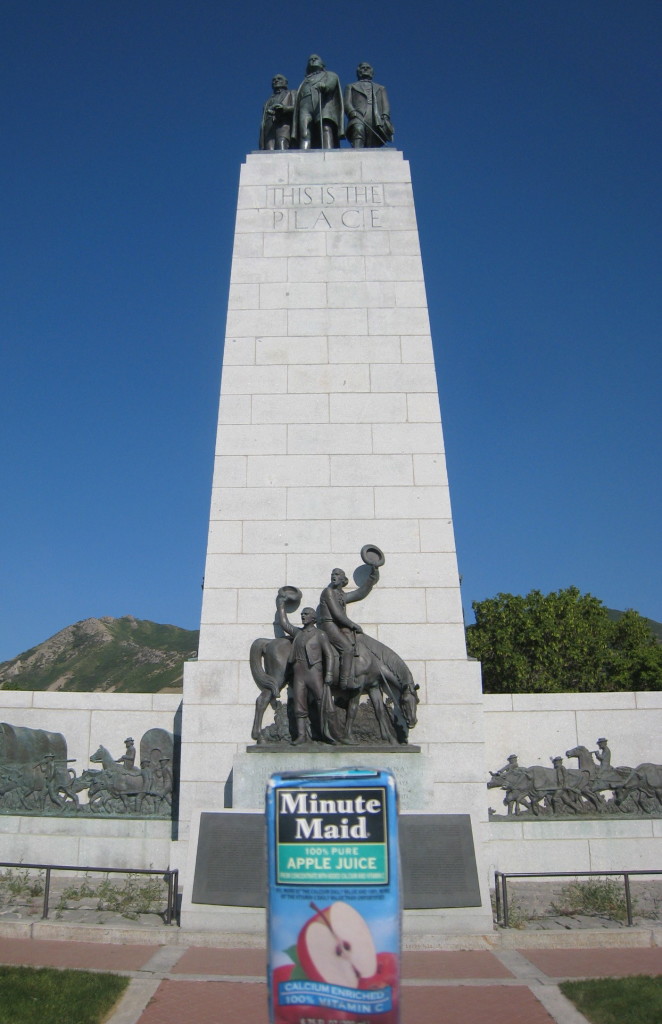
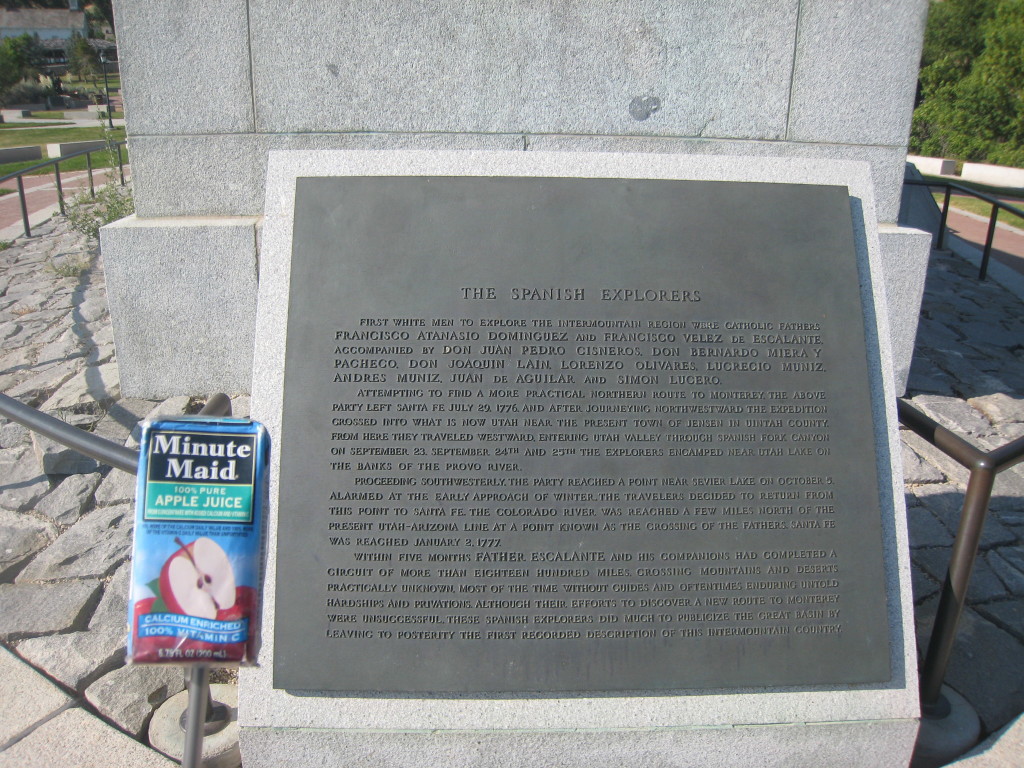
“The Spanish Explorers – First white men to explore the intermountain region were Catholic fathers Francisco Atanasio Dominguez and Francisco Velez de Escalante, accompanied by Don Juan Pedro Cisneros, Don Bernardo Miera y Pacheco, Don Joaquin Lain, Lorenzo Oliveres, Lucrecio Muniz, Andres Muniz, Juan de Aguilar and Simon Lucero. | Attempting to find a more practical northern route to Monterey, the above party left Santa Fe July 29, 1776, and after journeying northwestward the expedition crossed into what is now Utah near the present town of Jensen in Uintah County. From here they traveled westward, entering Utah Valley through Spanish Fork Canyon on September 23. September 24th and September 25th the explorers encamped near Utah Lake on the banks of the Provo River. | Proceeding southwesterly, the party reached a point near Sevier Lake on October 5. Alarmed at the early approach of winter, the travelers decided to return from this point to Santa Fe. The Colorado River was reached a few miles north of the present Utah-Arizona line at a point known as the Crossing of the Fathers. Santa Fe was reached January 2, 1777. | Within five months Father Escalante and his companions had completed a circuit of more than eighteen hundred miles, crossing mountains and deserts practically unknown, most of the time without guides and oftentimes enduring untold hardships and privations. Although their efforts to discover a new route to Monterey were unsuccessful, these Spanish explorers did much to publicize the Great Basin by leaving to posterity the first recorded description of this intermountain country.”
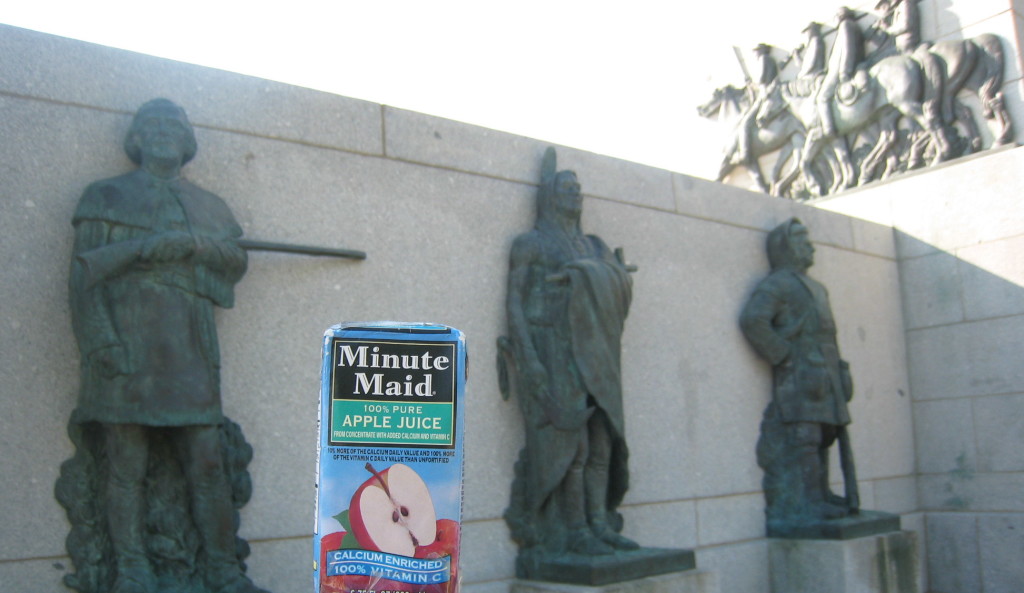
LEFT — “Etienne Provot (1782-1850) ~ Explorer, trapper, trader, adventurer, wintered at present North Ogden, Utah. In 1824-25, first white man to explore the valley in the vicinity surrounding the present Salt Lake City, 1825. Led William H. Ashley from eastern Utah to Weber Valley in 1826 and then before returning to the Uintah Basin explored the valleys and streams of central Utah as far south as Sevier Lake, Provo City, River Canyon and Valley were named after him.” CENTER — “Chief Washakie (1804 – 1900) ~ Chief of the Eastern Shoshones, Great Warrior, wise leader of his people, known all over the western country as one of the most intelligent and able Indian chiefs, a commanding figure of powerful build and dignified carriage, sometimes referred to as the ‘George Washington’ of the western tribesmen, close friend of Brigham Young and the Mormon people.” RIGHT — “Peter Skene Ogden (1794 – 1854) ~ Fur trader, trapper, explorer, intrepid leader of Hudson’s Bay Fur Company from headquarters in the far northwest. He visited Utah in 1825, 1828 and 1829, discovered the Humboldt River in present Nevada in 1828 and explored thoroughly the northern shores of the Great Salt Lake in 1829 established Ogden’s Hold Modern Huntsville Utah the center of Indian Fur, trade Ogden City Valley River and Canyon bear his name.”
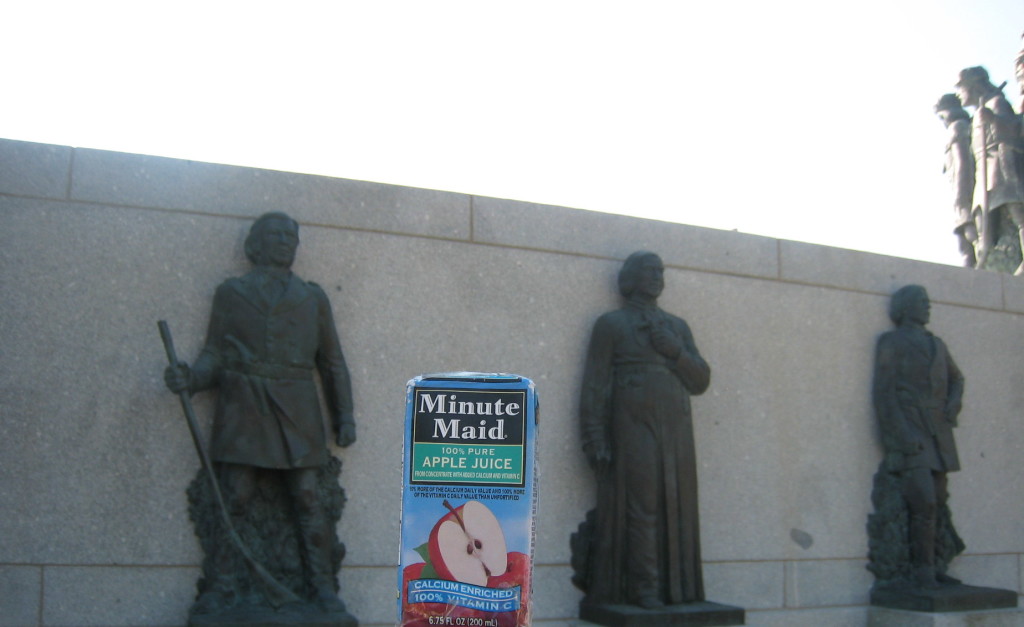
LEFT — “Capt. Bonneville (1796-1878) ~ Soldier, explorer, trapper, adventurer, traveled extensively in the north-west and on the borders of the Great Basin, 1832-35. Prehistoric Lake Bonneville was named after him, after his return from the west. He fought through the Mexican and Civil Wars and subsequently rose to the rank of Prevet-Brigadier General. At the time of his death in 1878 he was the oldest officer in the United States Army.” CENTER — Father de Smet S.J. (1801-1872) ~ Jesuit Missionary. Born in Belgium. Had great influence with the Indians, particularly of the northwest. Visited northern fringe of the Great Basin and probably the Great Salt Lake Valley in 1841. Five years later, he met the Mormons at Winter Quarters. ‘These people,’ he later wrote, ‘asked me a thousand questions about the regions I had explored, and the valley I have just described to you pleased them greatly from the account I gave them of it.” RIGHT — John C. Fremont (1813-1890) ~ Pathfinder, explore, soldier, statesman. Led five significant exploring and scientific expeditions to the west, 1842-1854, three of which traversed the Great Basin to California. Conducted the first scientific exploration of the Great Salt Lake in 1843 and was first to traverse the treacherous Great Salt Lake desert directly westward from Great Salt Lake to the site of modern Elko, Nevada. His report and map published in 1845 were invaluable to the Mormon pioneers in their westward journey.”
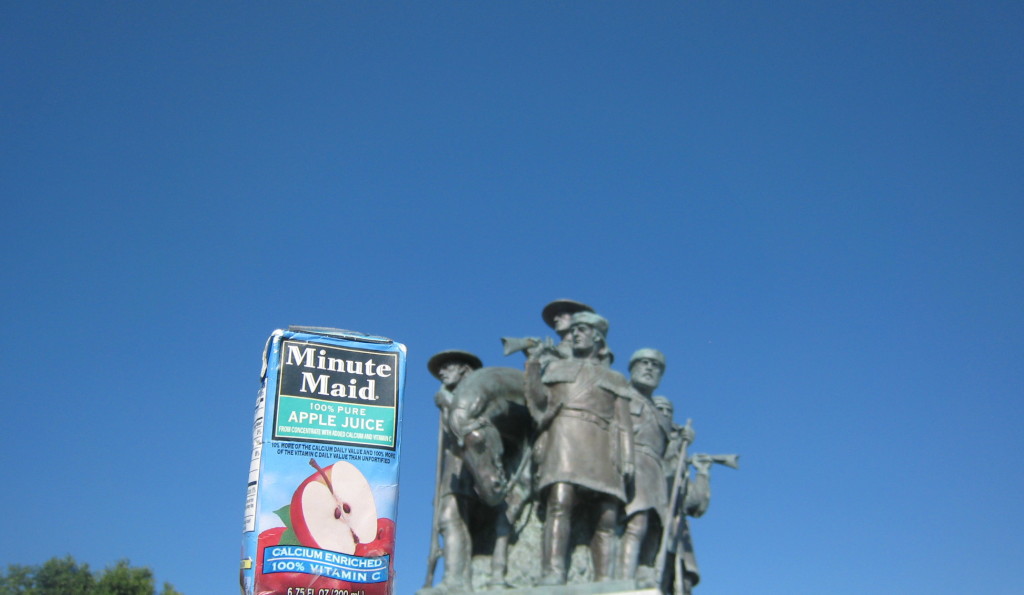
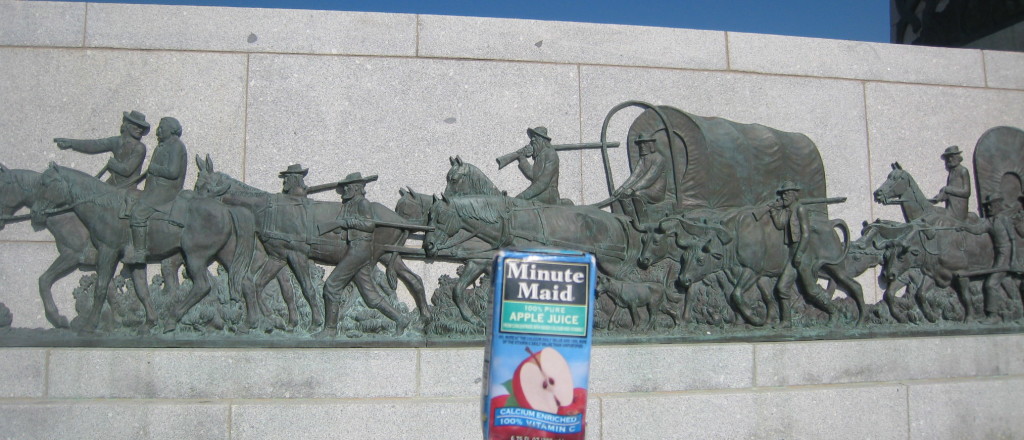

“Hosanna! Hosanna! Hosanna! To God and the Lamb! Amen! Amen! Amen! And it shall come to pass in the last days that the mountain of the Lord’s House shall be established in the top of the mountains and shall be exalted above the hills; and all nations shall flow unto it, the wilderness and the solitary places shall be glad for thee, and the desert shall rejoice and blossom as the rose. – Isaiah 2:2, 35:1”
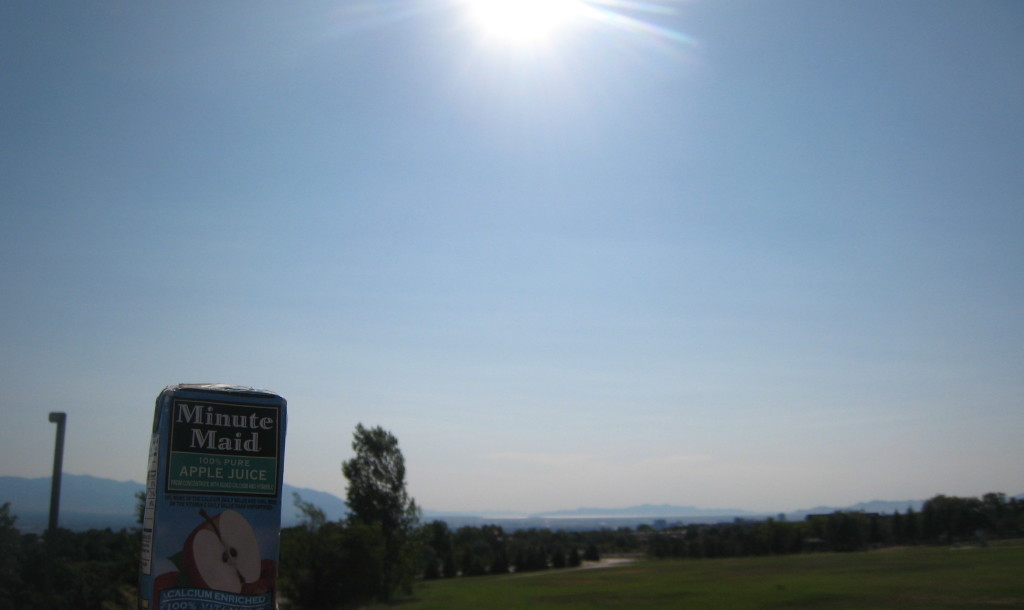
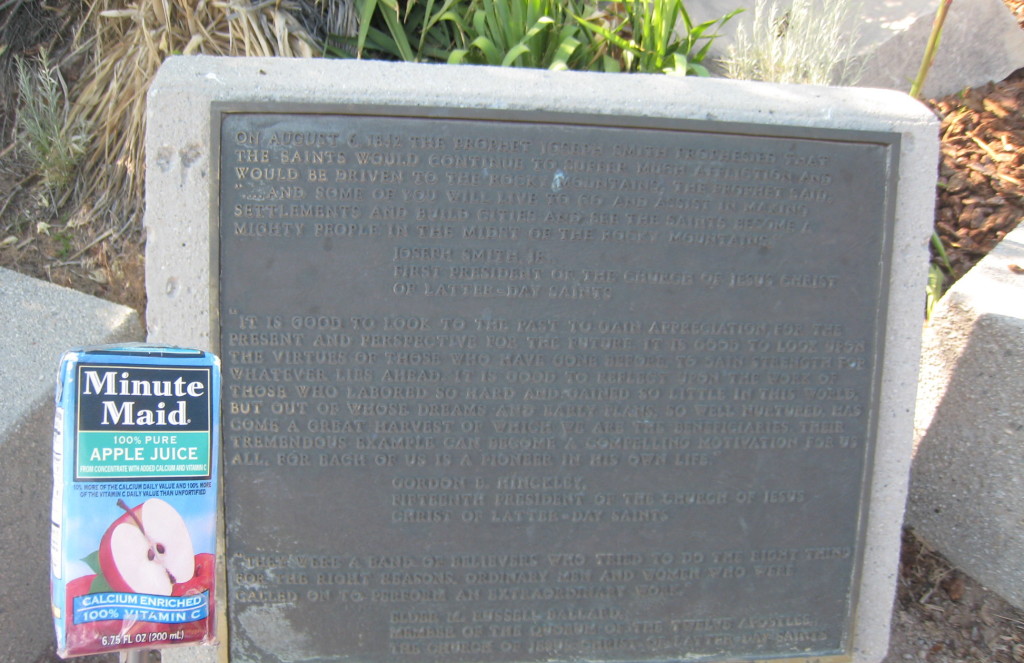
“On August 6, 1842 the Prophet Joseph Smith prophesied that the Saints would continue to suffer much affliction and would be driven to the Rocky Mountains. The Prophet said, ‘…and some of you will live to go and assist in making settlements and build cities and see the Saints become a mighty people in the midst of the Rocky Mountains. – Joseph Smith, Jr., First President of the Church of Jesus Christ of Latter-day Saints.”
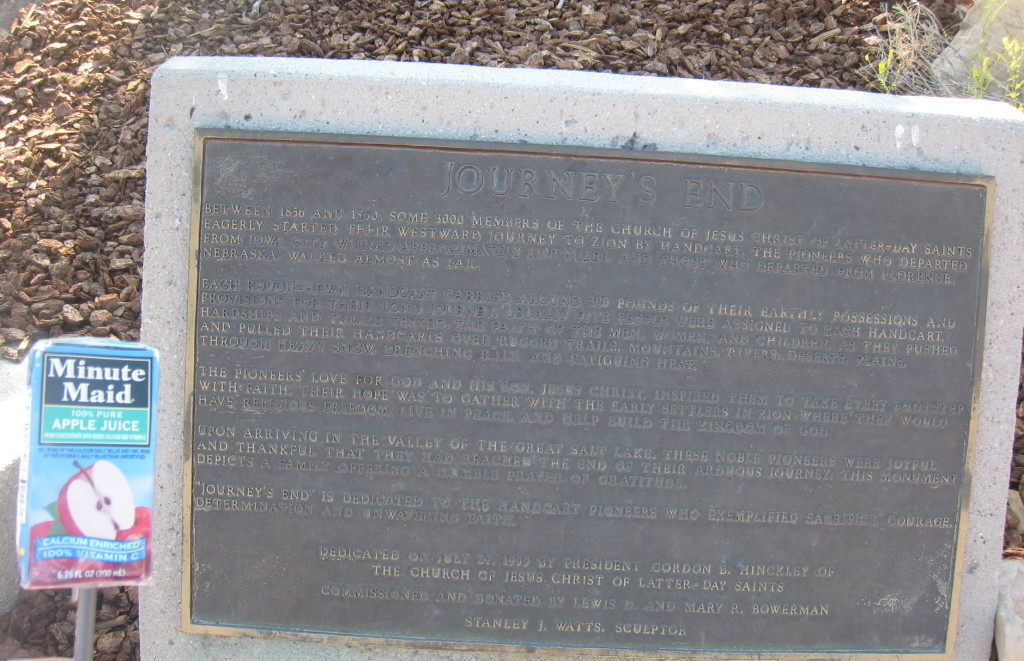
“Journey’s End ~ Between 1856 and 1860, some 3000 members of the Church of Jesus Christ of Latter-day Saints eagerly started their westward journey to Zion by handcart. The pioneers who departed from Iowa City walked approximately 1300 miles, and those who departed from Florence, Nebraska, walked almost as far. | Each rough-hewn handcart carried around 300 pounds of their earthly possessions and provisions for their long journey. Usually five people were assigned to each handcart. Hardships and trials tested the faith of the men, women, and children, as they pushed and pulled their handcarts over rugged trails, mountains, rivers, deserts, plains, through heavy snow, drenching rain, and fatiguing heat. | The pioneers’ love for God and His Son, Jesus Christ, inspired them to take every footstep with faith. Their hope was to gather with the early settlers in Zion where they would have religious freedom, live in peace, and help build the kingdom of God. | Upon arriving in the valley of the Great Salt Lake, these noble pioneers were joyful and thankful that they had reached the end of their arduous journey. This monument depicts a family offering a humble prayer of gratitude. | ‘Journey’s End’ is dedicated to the handcart pioneers who exemplified sacrifice, courage, determination, and unwavering faith. – Dedicated on July 24, 1999 by President Gordon B. Hinckley of The Church of Jesus Christ of Latter-day Saints (commissioned and donated by Lewis D. and Mary R. Bowerman; Stanley J. Watts – sculptor)”
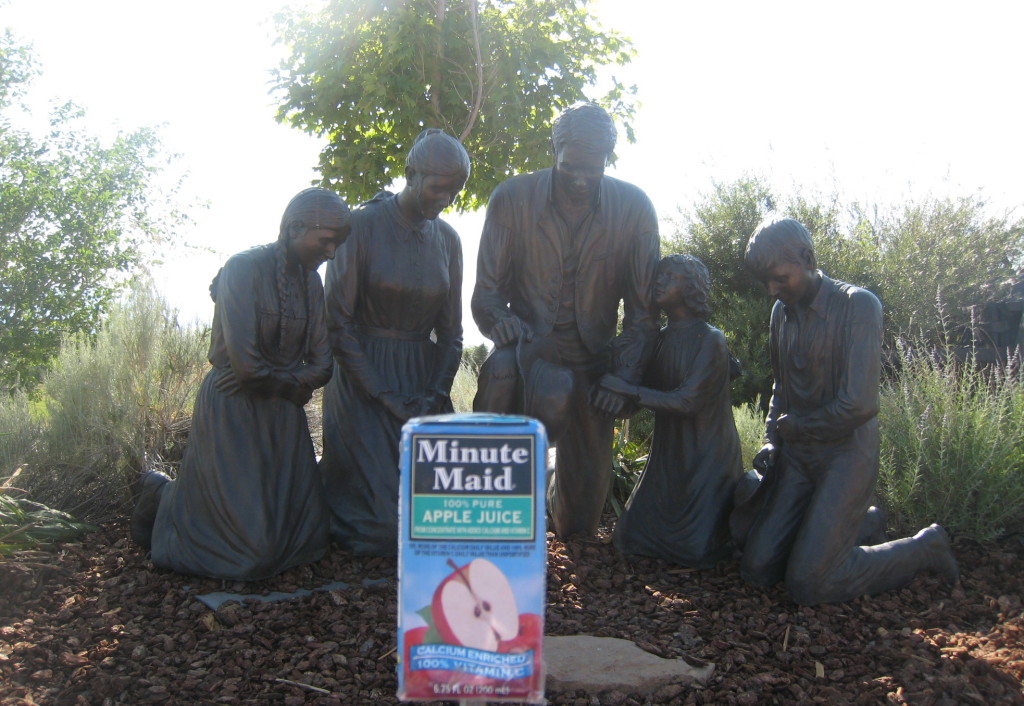

“Handcart Companies”
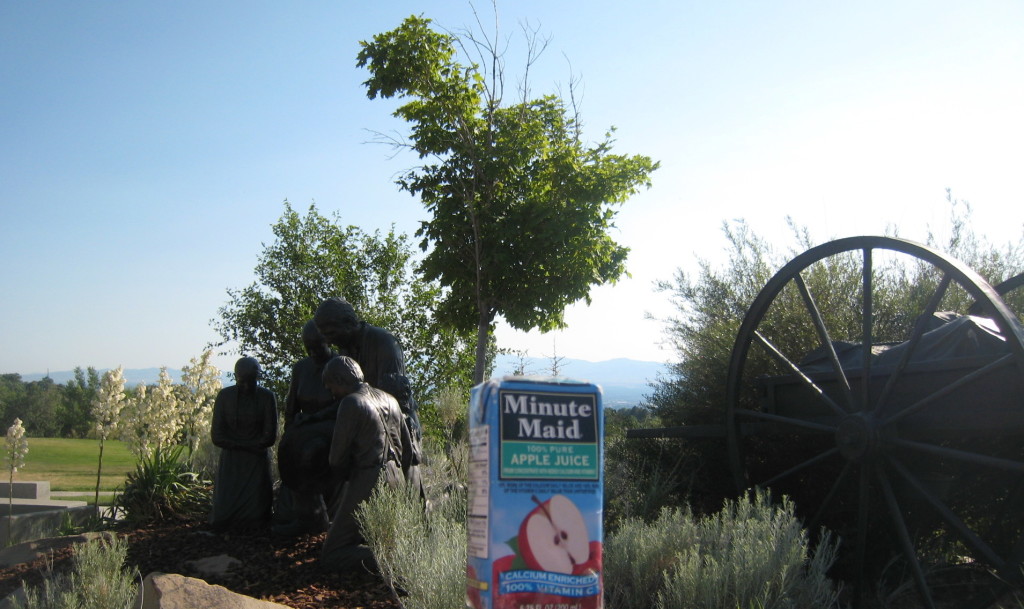

“The Willie and Martin Companies experienced severe problems. With a sense of urgency, they started their long journey too late in the year. Their frail handcarts made of unseasoned wood broke frequently and added to their problems. In Wyoming these pioneers encountered snow and freezing weather, their supplies ran out. Over 200 pioneers died, the survivors were thankful when the rescue parties sent by Brigham Young arrived to help them complete their journey. – The Willie and Martin Companies, 1856” | “Thus had one hardship followed another…but, by the help of God, I did make the trip, and I always have and always will give Him the honor, praise and thanks for it…there were thousands of wishes and prayers, as well as dreams that we might endure the hardships and reach Zion where we hoped better days were in store for us. – Lars Christensen, The Rowley Company, 1859” | “On the 24th of September, 1860, we took up our handcarts for the last time. We pulled them fourteen miles on to the campgrounds in Salt Lake City. Here we set them down, never more to realize how heavy they had been, how hard to pull. – Carl Field, The Stoddard Company, 1860”




